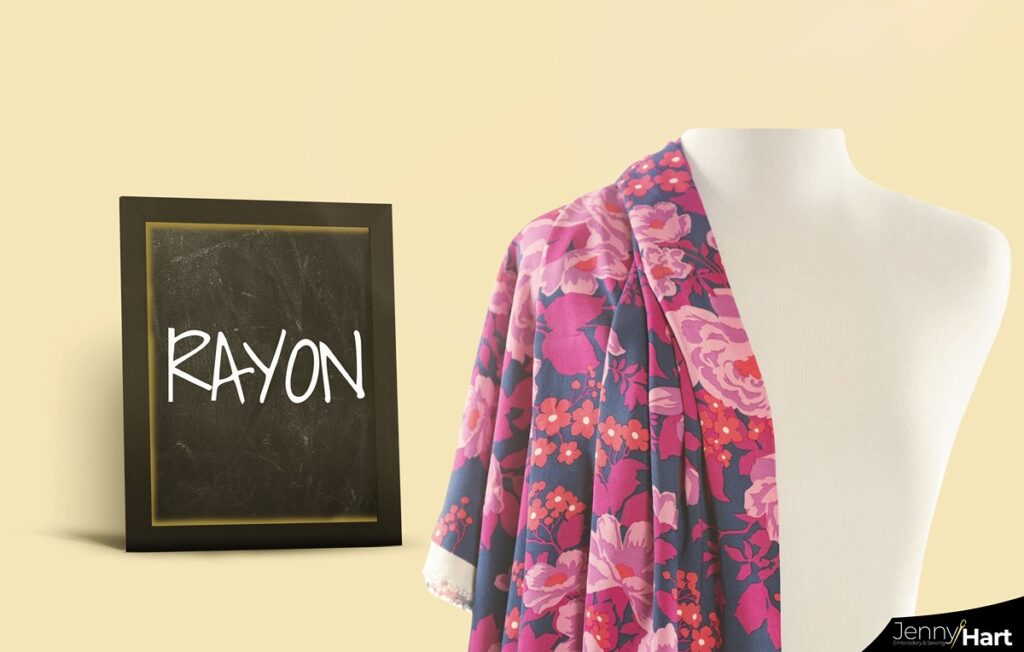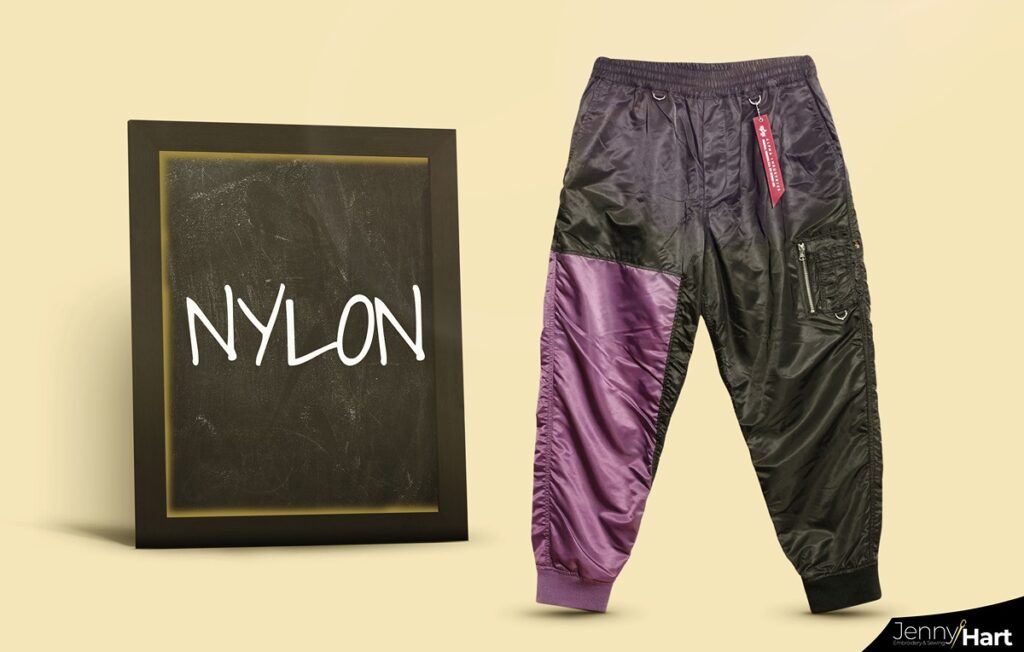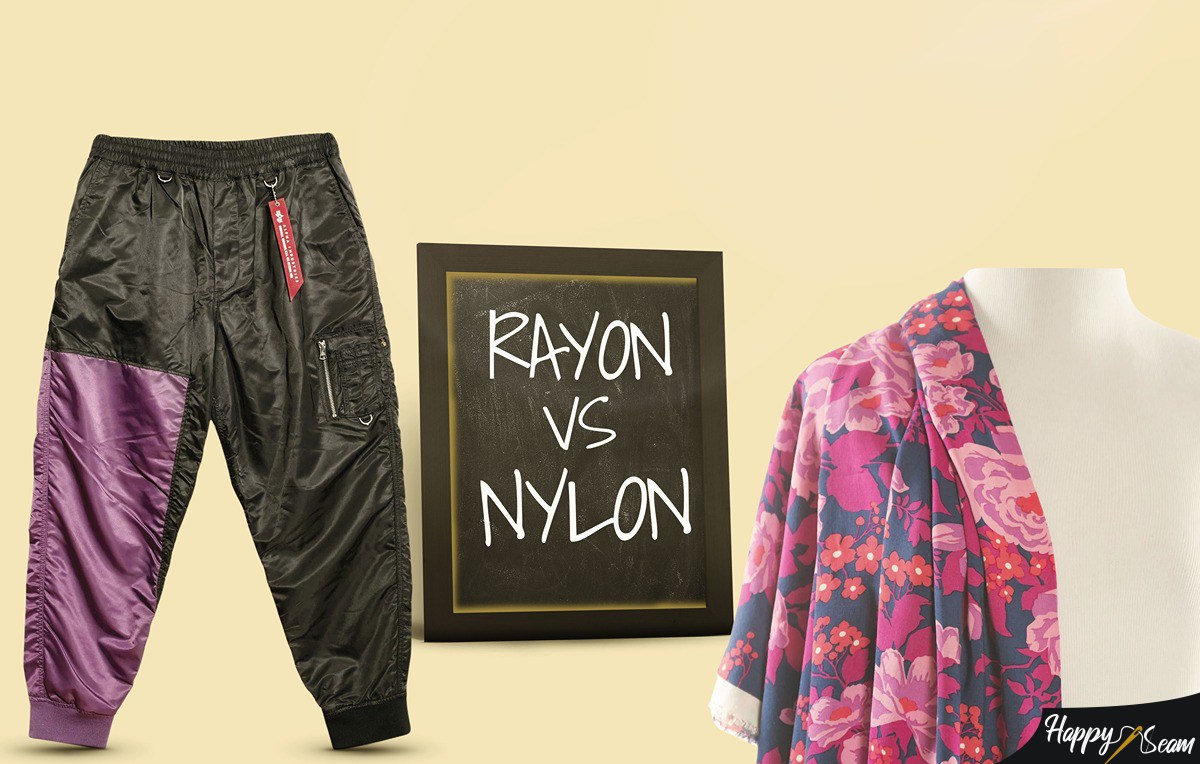One of the rough things to deal with when going garment purchasing is all the different fabrics. It is a challenge not being able to understand the differences and know what the best choice is. This frustration may occur when feeling rayon and nylon textiles since they both are known for their softness.
The remarkable soft feature they possess make them of equal rank and naturally create curiosity about “Rayon vs Nylon”.
As a material, nylon is better than rayon since it is more durable it will last its owner longer and its easy aftercare will make it less of a headache to care for.
Combining this with its silk-like qualities it outperforms rayon. The only negative side you as a reader should be aware of is that nylon is not composable!
Key Takeaways
- Both rayon and nylon are great alternatives for silk.
- Rayon is sensitive to water!
- Considering durability nylon fibers are more stable than that rayon.
- Nylon is more elastic than rayon meaning it is under stress its fibers will go back to their original form quicker.
- Rayon is biodegradable while nylon is not environmentally friendly at all meaning it will never biodegrade.
Comparison Between: Rayon & Nylon
Rayon Textile

The artificial material known as rayon entered the market as a solution for mass-producing silk. It has a lot of silk-like qualities that make it as popular as it is and at the same time it is cheaper to produce. Rayon as a textile is also very breathable and smooth to the touch, it is also more durable than silk and easier to dye.
Because of its smoothness and breathability, rayon began to be incorporated into almost everything starting from articles of clothing to accessories such as handbags and even house attire. It was and continues to be a popular fabric; however, the downside of rayon is that the fibers used to make it are easily dissolved by water. As a result, the items are prone to ripping under damp circumstances such as rain, producing massive problems for manufacturers in a variety of industries.
Nylon Textile

Created at the beginning of the 1900s nylon is a durable but soft alternative to silk. Giving the owner, a breathable lightweight feel at inexpensive cost nylon is used in the fashion industry as well as in the engineering part of the marketplace.
Nylon’s strong endurance makes it an ideal purchase for clothes that need to last a long time. Considering that nylon as a fabric is also comfortable it seems to have no downsides. Well, even nylon is not ideal. This fabric has a weakness and that is its tendency to melt. Now, this should not alarm you because it does not melt just by use but its fibers under certain circumstances, which we will go more in-depth later, can come apart and cause the product to melt.
The two fabrics being discussed are indeed manmade, so they were created for the one purpose of satisfying the customer at their maximum capacity. Comparing them will be done in three different categories such as their textile advantages, their maintenance after purchase, and their lasting impact on the environment. Hopefully, with these categories, the dilemma of Rayon vs Nylon will be solved.
Textile Advantages
Rayon and Nylon are known to be soft and have been used as an alternative to silk, but these two fabrics have more to them than just their softness.
To begin, rayon is recognized for its shine, which gives it the look of a luxury material while saving both the maker and the consumer money. It is also an excellent product for outdoor activities and is included in a variety of athletic gear. Rayon is not known to generate electric fields when rubbed against other textiles or even against itself, and it is also known to be moist absorbent while remaining breathable. These features provide rayon a significant advantage in that it may be used in several different ways, opening up possibilities in a wide range of sectors.
Nylon does not hold back either when it comes to its possibilities. An inexpensive synthetic fiber that is both softer and more durable than silk nylon is also extremely durable. Being lightweight is just another benefit that pairs amazingly with the nylons water resistant trait. Just these two make this fabric a competitor to rayon seeing that they can be used heavily in the athletic department. Nylon is also known to be used in other industries such as machinery pieces, seals, electronic boards, and so on. It is extremely flexible, and the clothing industry makes very good use of it.
Fabric Maintenance
When it comes to the aftercare of the item rayon and nylon do not differ much. This may be because they are both laboratory-made products.
Both rayon and nylon should be washed in cold water since they are materials prone to shrinkage under extreme heat. They can either be hand-washed or machine-washed. The same implies to their drying process. Being able to use a drying machine or air dry them one thing is certain with both, avoid direct sunlight. Direct sunlight might shrink both textiles.
Nylon does have an advantage though being a sturdier material it does not stretch as much as rayon and thus has a more extended life after purchase. Its fibers also have more elasticity meaning it will spring back into its original form faster than rayon. With these two features, nylon assures the owner that the garment they purchase will remain as close as possible to its first wear.
Even though rayon and nylon do not stress you out for their care it is important to read the labels that are provided with the articles to avoid any disasters since the manufacturers know best about their garments.
Environmental impact
Considering rayon and nylon are both man-made materials, it is important to take into consideration their environmental impact when purchasing them, especially in this day and age.
Something that a lot of people are surprised by is the fact that rayon is compostable. It takes rayon approximately 3 weeks to biodegrade since its base when creating rayon is usually bamboo. On the other side of things, nylon is not at all degradable. Nylon will never decompose in nature and will accumulate with other plastics unless recycled. This of course has to do with the fact that nylon is a form of plastic itself.
If your main purpose when shopping is to not harm the planet you should stay away from nylon unless you decide to find a way to reuse it or donate it in the future.
Final Thoughts
Many elements come into play while addressing the topic “Rayon vs Nylon.” Nylon and Rayon are both excellent materials with widely diverse applications in manufacturing and consumer items. While they both have their pros and cons, people use them interchangeably because they are both incredibly effective materials for manufacturing.
Taking these pros and cons into consideration nylon as a material has more use in various industries. If you are looking for a stable fabric that will withstand most of the things thrown at its nylon is your choice. The sole concern is that it is harmful to the environment. If this final piece of information does not sit well with you, rayon is an excellent choice for success in multiple fields too.
Further Reading
You can read several additional comparison blogs, one of which compares rayon and silk.
Singer 4423 and Singer 4432 are both excellent sewing machines, according to another comparison blog.
Additionally, a blog contrasts rayon and viscose. In addition, there’s a list of outstanding cordless irons that you should look into.
I graduated from London College of Fashion, and I’ve been working for a Fashion Design company for 10 years. My other hobbies are going to the gym and reading.



